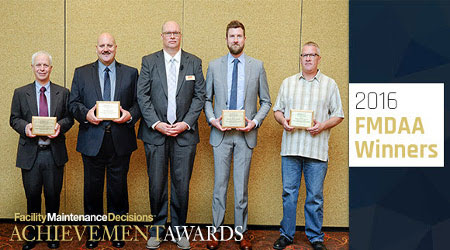
Four Tips Can Help FMs Tackle Building Internet of Things Projects
June 22, 2017
As the Building Internet of Things (IoT) continues to gain steam, more and more organizations have harnessed the power of connected systems in their facilities. But many organizations have faced challenges finding a way to make these systems live up to their full potential. This is specifically true in warehouse and industrial spaces, where already busy facility managers have largely taken on the management of these systems, and face a variety of challenges, including frustrations at the perceived (or actual) complexity of the system, reluctance from team members to fully learn and embrace the system, inability to manage new data sources coming from the systems, and existing, siloed infrastructures that don’t easily support data and information sharing. These barriers affect the amount of usable data companies can collect as well as the cost savings they are able to deliver.
The heart of the problem stems from the fact that "IoT" is not often found in job titles or descriptions, and IoT responsibilities can exist among several different departments. In warehouse and industrial environments, the bulk of responsibilities created by these systems has fallen on the facilities team. How can facility managers help their organizations fully leverage the power of the IoT? Keep these four points in mind.
1. Work Across Departments
IoT responsibilities generally fall into a number of categories and the data collected by these systems can be used to inform a variety of cross-organizational decisions. To fully leverage the data, it’s important for IT and facilities teams to work together to analyze the collected data and ensure the success of the program.
2. Focus on Data Collection
The goal at the heart of any Building IoT initiative is to collect data that can be analyzed and applied to benefit the business. Ideally, this data can be used by different departments. For example, in a warehouse, IT might leverage occupancy data from sensors that show a lot of activity in certain areas and help spot trends that inform opportunities to implement new processes that improve productivity, efficiency, or safety and security, while a facility team might use that same data to justify the purchase or repositioning of equipment to ease traffic issues. Understanding that data is the cornerstone of any IoT initiative will help organizations make the most of their investments.
3. Begin with a Pilot Program
One factor holding organizations back from implementing full-scale Building IoT systems is perceived complexity. This is true with organizations installing the first intelligent system, as well as those working to integrate multiple systems.
To combat this barrier, start small and be prepared to scale (or iterate). While the process of deciding which pilot program to implement varies by organization, it's always a good idea to assess existing infrastructure to understand if there are untapped IoT platforms or conduits that may minimize the complexity of starting from scratch.
4. Think Holistically
Companies must examine all projects – even, and especially, those perceived to be non-IoT – and consider how they might benefit and accelerate future Building IoT projects. When updating facility hardware or equipping new buildings with lighting, for example, think about it as a deployment of a connected system that starts with one physical space – say a warehouse – and then grows and uses IoT to connect this space to others, collecting data from sensors embedded in each fixture, data that can improve processes throughout the entire facility via a connected or open platform.
Assess and make known the benefits and risks of implementing an IoT system versus not implementing it, and of integrating it with other systems that may already be in place. Additionally, make sure employees are aware not only of the benefits that both the company overall and its customers will see from this change, but also of the benefits that they will see within their own workplace environment.
This Quick Read was written by Chris Conway, director of marketing, Digital Lumens. Click here to read more about the Building Internet of Things on Facilitiesnet.com.
Next
Read next on FacilitiesNet












